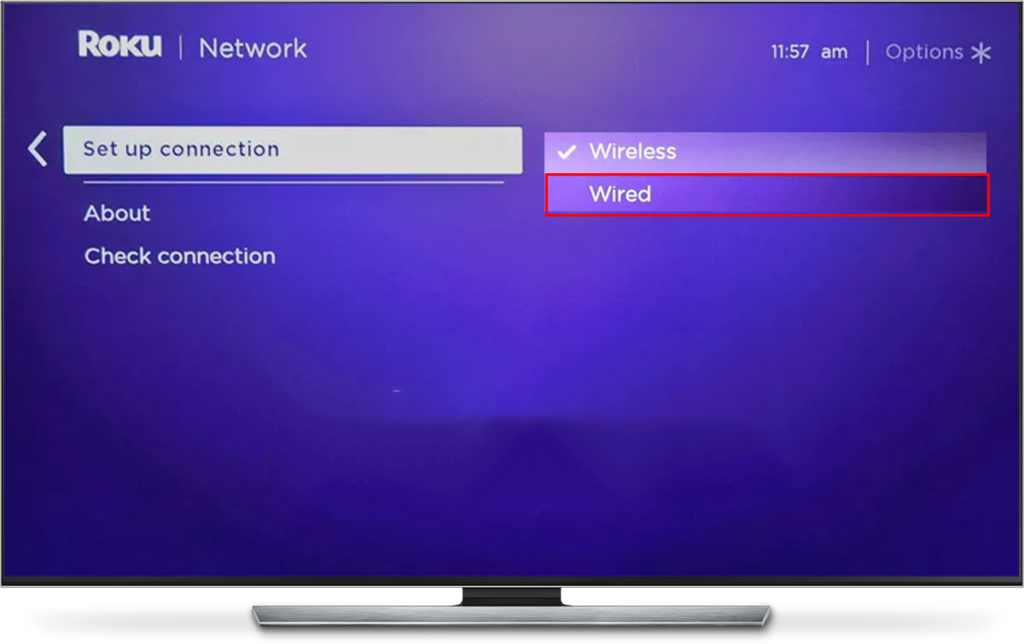- If you’re experiencing problems with your Internet connection, there are ways to use Roku without Wi-Fi.
- None of them is completely perfect, but you will be able to play content on your dongle
- What are the steps to follow in each of the tricks and what advantage does each have?
Considering that most of the technological equipment we use at home requires an Internet connection, many readers have asked us if it is possible to use a Roku device without WiFi. After all, you probably think that this is impossible. We will answer this question with all the details.
Of course, this only makes sense if you are experiencing problems with your Internet connection, if it is too slow or somewhat unstable and you do not have a quality service like the one you are surely paying for.
Fortunately, There are some solutions that you could well take into account in this type of situation.
Ways to use a Roku device without WiFi
Before we get into the ways to take advantage of a Roku device without WiFi, here are some clarifications. The most important thing is that you are aware that none of them are completely perfectand you should carefully consider which one suits how you are going to play content on your dongle.
Screen mirroring with a mobile hotspot
If your wireless router isn’t doing its job as it should, you can still fall back on your smartphone. Typically you will have at least access to 4G networks, as older 3G networks will not suffice.
But if you have access to 4G or 5g networks, could you play some channels at 720p resolution.
The first thing will then be to turn your iPhone or Android into a mobile hotspot.
- On Android, go to Settings, Connection and sharing, Portable hotspot and turn on the option
- On iPhone, go to Settings, Cellular, Personal Hotspot or Settings, Allow others to join
With the mobile hotspot created, you are ready to make your phone a mobile hotspot.
- With the Roku remote go to Settings, Network, Wireless (Wi-Fi)
- On iPhone or Android, go to Settings, System, Screen mirroring
- Choose the Roku device and accept the screen mirroring request on it

From that moment you will be able to transmit content from your iPhone or Android to Roku by mirroring the screen.
Connecting via Ethernet cable
An Ethernet cable is a great idea to get an uninterrupted internet connection flowing to your device. Of course, the Roku should be compatible with the input of an Ethernet cable. If so and your WiFi fails but you have a connection from the router, this simple accessory will solve the matter with a very high image quality.
- Connect the Ethernet cable to the router and at the other end to the Roku device
- Turn on the Roku device and navigate to the Settings menu with the remote
- Go to Network and select Wired, following the rest of the instructions on the screen

You have to know that while Ethernet is great for providing uninterrupted and stronger connections, it has some disadvantages like that all the time you will have to live with a cable crossing your environments to connect said devices. If that’s not a problem for you, this is a good way to stream content on Roku.
On the other hand, remember that we said that your Roku may not have Ethernet ports, so you should look for that. Regardless of that, you can make a longer Ethernet cable if the two devices are too far apart.
Running the Roku Media Player app
Finally, this method requires that you have an initial connection to the Internet -either through WiFi or Ethernet-. That’s because you will need to download the Roku Media Player app from the Roku Channel Store. Once the application is downloaded, you can play content through a USB drive without problems.
That, once you confirm that your Roku has an Ethernet port or via DLNA local area network (LAN).
If you use the USB path, the drive must be formatted with one of the following file systems:
- FAT16
- FAT32
- EXT2
- EXT3
- NTFS
- HFS+
Assuming this is the case, the steps to play content from a USB drive are as follows:
- Connect your USB drive to your Roku device, using the USB port on your Roku device
- Accept the prompt to launch the Roku Media Player app
- Go to Everyone on the Roku Media Player main dashboard
Select a USB drive from the options to access the content on it.
However, setting up a DLNA is more difficult because there are only a few supported DLNA servers. Only the following are servers that you will be able to link to your Roku device and hence the complication.
- twonky
- Windows media player
- Windows Media Center
- play
- Service
- plexus
- ReadyMedia
- MiniDLNA
- ReadyDLNA
Depending on the server you have chosen, you will have to configure it as indicated by the developers of the service. From there, you can play content stored on the DLNA server through your Roku partner software.
That is, you are limited to what is stored on a USB drive or on a local server. There isn’t that much, of course.
conclusions
In general terms, we can affirm that the absence of a reliable WiFi network does not have to ruin your experience using a Roku device. Although obviously you are going to lose many of its best functions, it is also absolutely true that the tricks are going to get you out of trouble and you are going to be able to play content without problems.
How have your feelings been with Roku without a WiFi Internet connection? Do you recommend other alternatives?



